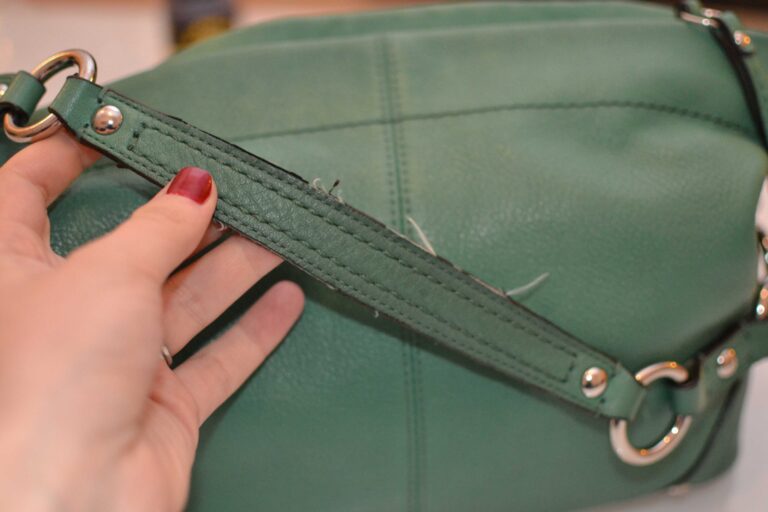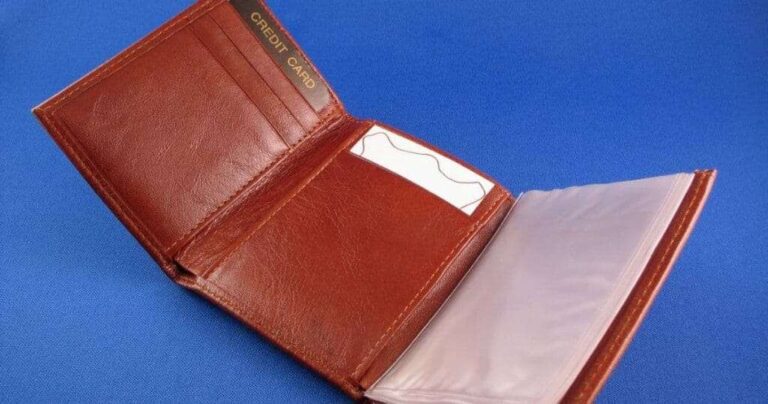Can You Tailor a Leather Jacket? Sizing Solutions
Tailoring Leather Jackets
Tailoring a leather jacket can help you achieve the perfect fit and desired style. Here we will discuss the key considerations and techniques for altering leather jackets, especially regarding sleeve lengths and distressing.
Considerations Before Alterations
Before you decide to alter your leather jacket, it’s important to keep a few key things in mind:
- Complexity of Design: Leather jackets often feature intricate designs, including crossbody zips, flaps, and pockets, which can complicate the alteration process (MAHI Leather).
- Expert Craftsmanship: Altering leather is a complex process that requires expertise. Working with an experienced craftsman ensures the best results without compromising the jacket’s integrity.
- Material Quality: The quality of the leather can significantly affect the final appearance post-alteration. High-quality leather will better withstand changes.
Read more about common design complications you might face during alterations.
Altering Sleeve Lengths
One of the most common alterations is adjusting the sleeve length. Sleeves can be either lengthened or shortened:
- Shortening Sleeves: This is relatively simple. The tailor removes excess material and re-stitches the sleeve hem.
- Lengthening Sleeves: This requires incorporating additional leather, which can be complex. The skill level of the tailor plays a significant role in the final appearance.
Here is a quick comparison of costs:
| Alteration | Cost Range |
|---|---|
| Shortening Sleeves | $40 – $100 |
| Lengthening Sleeves | $60 – $150 |
For additional tips on jacket alterations, read our article on how to fix leather jacket tear.
Distressing Techniques
Distressing a leather jacket can add character and a vintage look to your jacket. Here’s how you can distress your jacket at home:
- Soak in Rubbing Alcohol: Lightly apply rubbing alcohol to the area you wish to distress.
- Use a Wire Brush or Sandpaper: Gently rub the desired areas to create a worn look. Be cautious with the pressure to avoid damage to the leather.
- Wipe with a Damp Cloth: Clean the area with a damp cloth to remove any remaining debris.
The results will vary depending on the type of leather used in your jacket (MAHI Leather).
For an in-depth guide on maintaining distressed leather, check out our resources on how to care for a leather jacket.
By understanding these different aspects and techniques, you can make informed decisions on tailoring your leather jacket for an enhanced fit and aesthetic appeal.
Maintaining Leather Jackets
Maintaining your leather jacket is essential to ensure its longevity and keep it looking pristine. Regular care can prevent cracking and other common issues. Here’s how to do it:
Preventing Cracking
One of the most common issues with leather jackets is cracking. This usually occurs when the leather dries out and dirt and grease penetrate the surface. According to MAHI Leather, high-quality leather jackets, when properly maintained, will not crack, but lower quality bonded leather may eventually succumb to this issue. To prevent cracking, follow these guidelines:
- Keep It Moisturized: Use a leather conditioner regularly to keep the leather supple and hydrated.
- Avoid Excessive Sun: Sunlight can dry out the leather, so store your jacket out of direct sunlight.
- Clean Gently: Wipe down your jacket with a damp cloth to remove dirt and grease.
- Avoid Heat Sources: Keep your jacket away from radiators and other heat sources that can dry out the leather.
| Prevention Method | Description |
|---|---|
| Moisturization | Use a leather conditioner regularly. |
| Sunlight Avoidance | Store out of direct sunlight. |
| Gentle Cleaning | Wipe with a damp cloth to remove dirt. |
| Heat Source Avoidance | Keep away from radiators. |
For more information on preventing cracking, visit our article on how to care for leather jacket.
Care and Storage Tips
Proper care and storage can significantly extend the life of your leather jacket. Treat it like a valuable item by following these specific care instructions:
- Hang Correctly: Use a wide, padded hanger to maintain the jacket’s shape.
- Well-Ventilated Storage: Store your jacket in a well-ventilated closet to prevent mold and mildew.
- Keep Dry: Avoid getting your jacket wet. If it does get wet, let it air dry naturally.
- Use a Leather Conditioner: Regularly apply a conditioner to keep the leather soft and supple.
Additional tips include:
- Avoid Wire Hangers: These can cause creases and distort the shape of the jacket.
- Proper Cleaning: Use leather-specific cleaning products to avoid damaging the material.
- Avoid Plastic Covers: These can trap moisture and cause mold.
For more tips on storing your jacket, check out our guide on how to store leather jacket.
By following these care and storage tips, you can ensure your leather jacket remains a timeless piece in your wardrobe. For more comprehensive guides, explore our articles on can you dry clean a leather jacket and can you steam leather jacket.
| Care Step | Description |
|---|---|
| Hang Correctly | Use a wide, padded hanger. |
| Well-Ventilated Storage | Store in a well-ventilated closet. |
| Keep Dry | Avoid getting it wet. |
| Use Conditioner | Regular application. |
| Avoid Wire Hangers | Prevent creases and shape distortion. |
| Proper Cleaning | Use leather-specific products. |
| Avoid Plastic Covers | Prevent mold and moisture buildup. |
By adhering to these guidelines, you can maintain your leather jacket’s quality and extend its life.
For further reading, visit how to clean mold off leather jacket for more maintenance tips.
Customizing Leather Jackets
If you’re looking to have your leather jacket tailored for a better fit, you’re not alone. Many leather jacket owners seek to make adjustments to their jackets to ensure comfort and style. Here’s a detailed look at the tailoring process and the associated costs.
Tailoring Process Overview
Tailoring a leather jacket can be achieved without any fancy tools, using straightforward methods to ensure a perfect fit. The alterations can include:
- Shortening Sleeves: This is a common alteration to ensure the sleeves are not too long, improving both fit and appearance.
- Resizing: Adjusting the fit to make the jacket tighter or looser as needed. This can involve taking in or letting out the sides.
- Shoulder Adjustments: Making the shoulders narrower or broader to fit your frame better.
- Length Adjustments: Modifying the overall length of the jacket to suit your style and comfort.
- Style Modifications: Customizations can also include adding or removing details like zippers, pockets, or decorative elements.
Skilled tailors can make these adjustments while maintaining the integrity and quality of the leather material (The Finest Leathers). Depending on the complexity of alterations, it may take anywhere from 2 to 10 weeks to complete the customizations.
Price Range for Alterations
The cost of tailoring a leather jacket varies based on the complexity and extent of the alterations. Here’s a general idea of the price range:
| Alteration Type | Cost |
|---|---|
| Sleeve Shortening | $25 – $50 |
| Resizing (Tightening or Loosening) | $50 – $100 |
| Shoulder Adjustments | $75 – $150 |
| Length Adjustments | $30 – $75 |
| Style Modifications | $25 – $100 |
The prices for these alterations range from $25 for simple tasks to $150 for more complex resizing (International Leather Club). Adjustments like resizing, length adjustments, and style modifications are possible while maintaining the jacket’s quality and design (The Finest Leathers).
Altering your leather jacket can be a valuable investment. Leather jackets themselves range from $20 to $1,600; adding tailored alterations ensures a perfect fit and enhances the jacket’s longevity.
For more information on how to care for your leather jacket post-alterations, visit our guide on how to care for leather jacket. If you’re considering adding custom features, check out our tips on how to paint leather jacket.
Complex Alterations
When it comes to altering a leather jacket, certain adjustments can be more intricate and time-consuming. Understanding these complexities is crucial to achieving the best results. This section will explore handling design complications and adjusting key fit areas like the shoulder, chest, and sleeve.
Handling Design Complications
Tailoring a leather jacket requires expertise due to the unique properties of leather, which is thicker and less forgiving than other fabrics. Specialized equipment and skills are essential in this process. Here are some common design complications you may encounter:
- Integrated Zippers: Zippers sewn into the edges of sleeves or other parts may need to be removed and repositioned for resizing. This can result in stitching disparities between original factory stitching and the tailor’s alterations.
- Unique Design Elements: Collars, cuffs, and other unique design elements may require a complete overhaul. For instance, transforming the style of collars or adding pockets can take up to 10 weeks (Quora).
- Seam Strength: Ensuring seams retain their strength after alteration is a critical aspect, as improper adjustments can weaken the integrity of the jacket.
Adjusting Shoulder, Chest, Sleeve
Shoulder Adjustments
Adjusting the shoulders of a leather jacket is one of the most complex alterations due to the structural importance of this area. Skilled tailors can resize and reshape the shoulder area to ensure a better fit without compromising the overall look of your jacket (The Finest Leathers).
Chest Adjustments
Altering the chest fit can involve taking in or letting out the sides, which requires precision to maintain the jacket’s original style and proportions. This process can enhance the jacket’s fit, making it more comfortable and aesthetically pleasing.
| Adjustment Type | Complexity Level | Time Required |
|---|---|---|
| Taking in sides | Moderate | 2-3 weeks |
| Letting out sides | Moderate | 2-3 weeks |
Sleeve Adjustments
Modifying the sleeves of a leather jacket is a common alteration, but it presents its own set of challenges:
- Shortening Sleeves: This process involves carefully removing and reattaching components like zippers or cuffs. Alignment of original and new stitching is crucial.
- Tightening or Loosening: Adjustments to the sleeve width require an even distribution of leather fabric, ensuring no unintended creasing or bunching.
| Sleeve Adjustment | Complexity Level | Time Required |
|---|---|---|
| Shortening | High | 2-4 weeks |
| Tightening/Loosening | High | 3-4 weeks |
The intricate nature of altering leather jackets often requires an investment in both time and resources. It’s essential to seek out experienced professionals who specialize in leather alterations to ensure the best outcomes. For more advice on maintaining and caring for your leather jacket, explore our dedicated sections.
Lining Materials for Jackets
When considering tailoring your leather jacket, one crucial element is the lining. The right lining can enhance the comfort, durability, and overall look of the jacket. This section will cover the various types of lining fabrics and the criteria for selecting the best option.
Types of Lining Fabrics
Several lining materials are commonly used in leather jackets, each with distinct advantages. Below are some popular choices:
-
Taffeta: Often used for its luxurious feel, taffeta maintains shape better than many other fabrics (Lusso Leather). It is commonly chosen for its smooth texture and durability.
-
Poly-Cotton: A blend of polyester and cotton, this material combines the strength and durability of polyester with the breathability and comfort of cotton. It is known for being long-lasting and wrinkle-free (Lusso Leather).
-
Fleece: This lining provides excellent insulation, offering warmth similar to wool but without the weight. Fleece is quick-drying but not windproof, making it suitable for cold, dry conditions (Lusso Leather).
-
Fake Fur: Chosen for its warmth and abrasion resistance, fake fur is easy to sew and adds a stylish element to the jacket. However, it may not be the most breathable option.
| Lining Material | Advantages | Disadvantages |
|---|---|---|
| Taffeta | Luxurious feel, maintains shape | Can be expensive |
| Poly-Cotton | Durable, wrinkle-free, breathable | Less luxurious |
| Fleece | Warm, lightweight, quick-drying | Not windproof |
| Fake Fur | Warm, abrasion-resistant | Poor breathability |
Lining Selection Criteria
When selecting a lining for your leather jacket, consider several factors to ensure you make the best choice. Here are some key criteria:
-
Comfort: The lining should feel comfortable against your skin. Materials like taffeta and poly-cotton are often chosen for their smooth texture and comfort.
-
Durability: A long-lasting lining material, such as poly-cotton, can extend the life of your jacket.
-
Warmth: If you wear your leather jacket in cold weather, fleece or fake fur linings provide excellent insulation. To understand more about the warmth of leather jackets, visit our article on are leather jackets warm.
-
Breathability: Breathable materials like poly-cotton reduce perspiration and enhance comfort, especially in warmer climates.
-
Style: The lining can also be a fashion statement. Choose a material and color that complement the exterior of the jacket and your personal style.
For more information on caring for your leather jacket, check out our guides on how to care for leather jacket and how to store leather jacket. These resources provide valuable tips for maintaining the longevity and appearance of your leather pieces.







